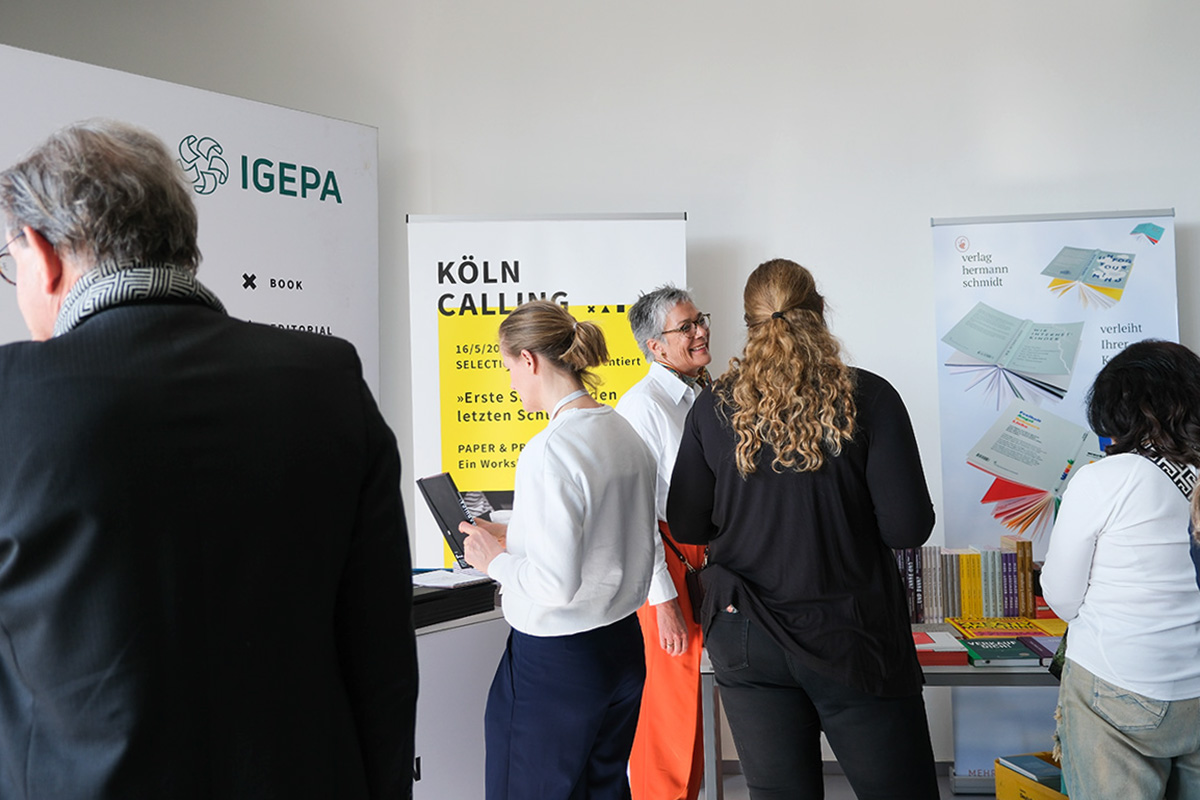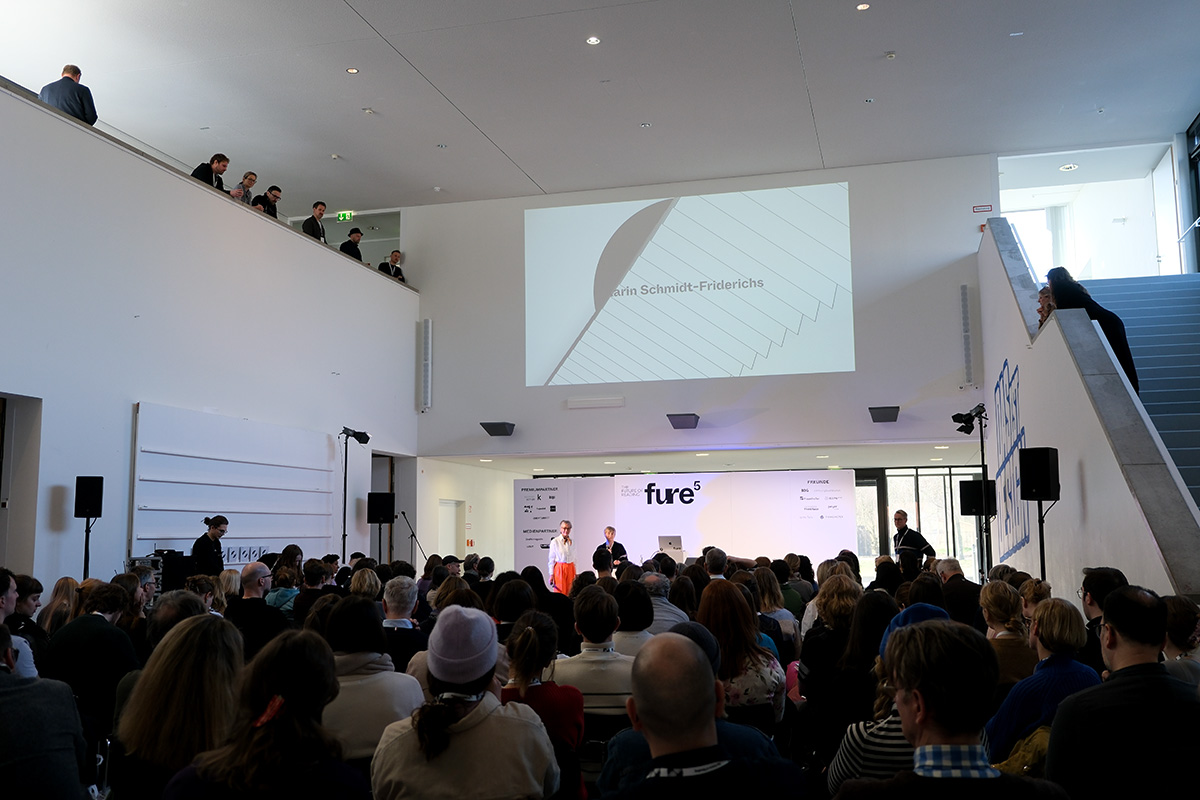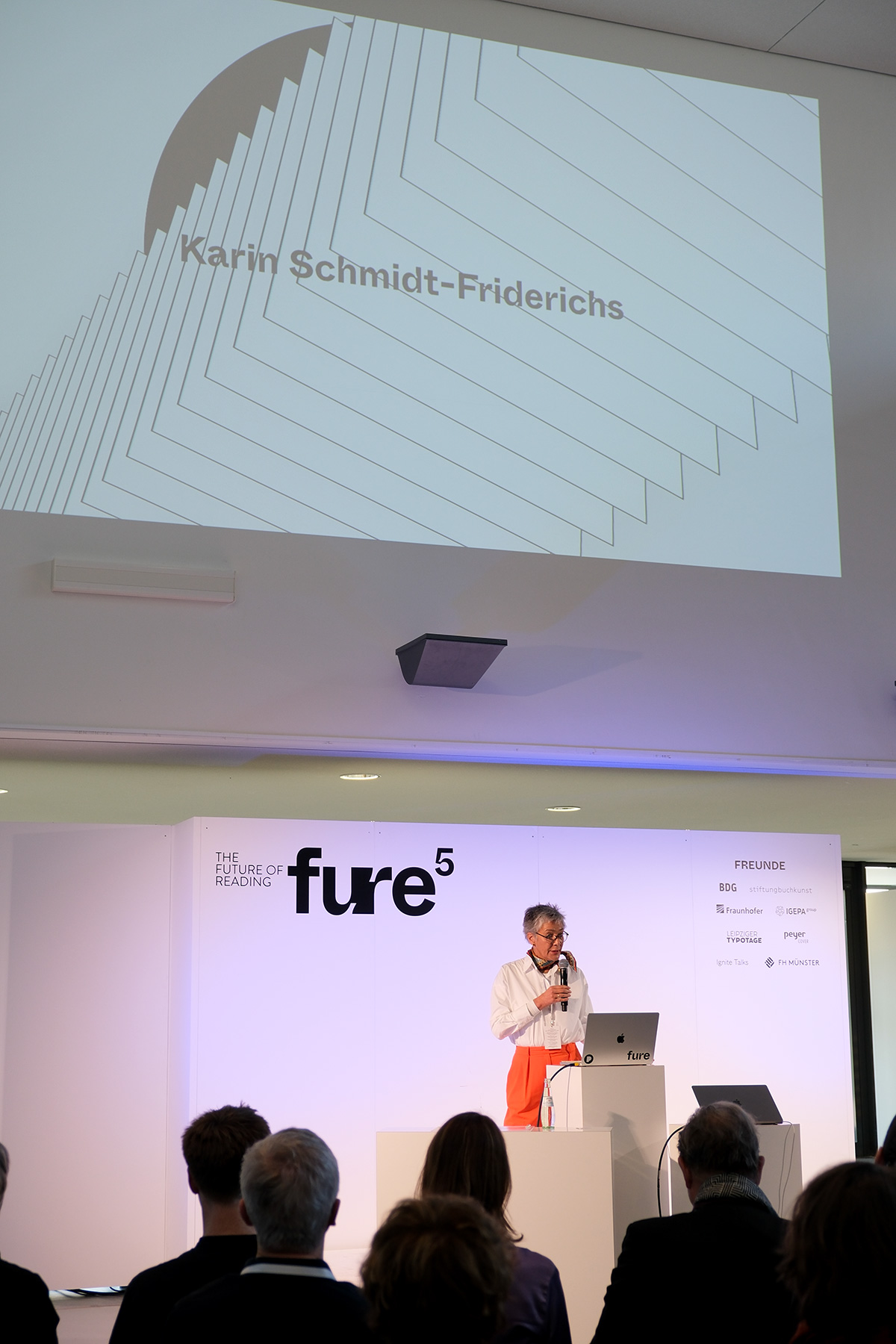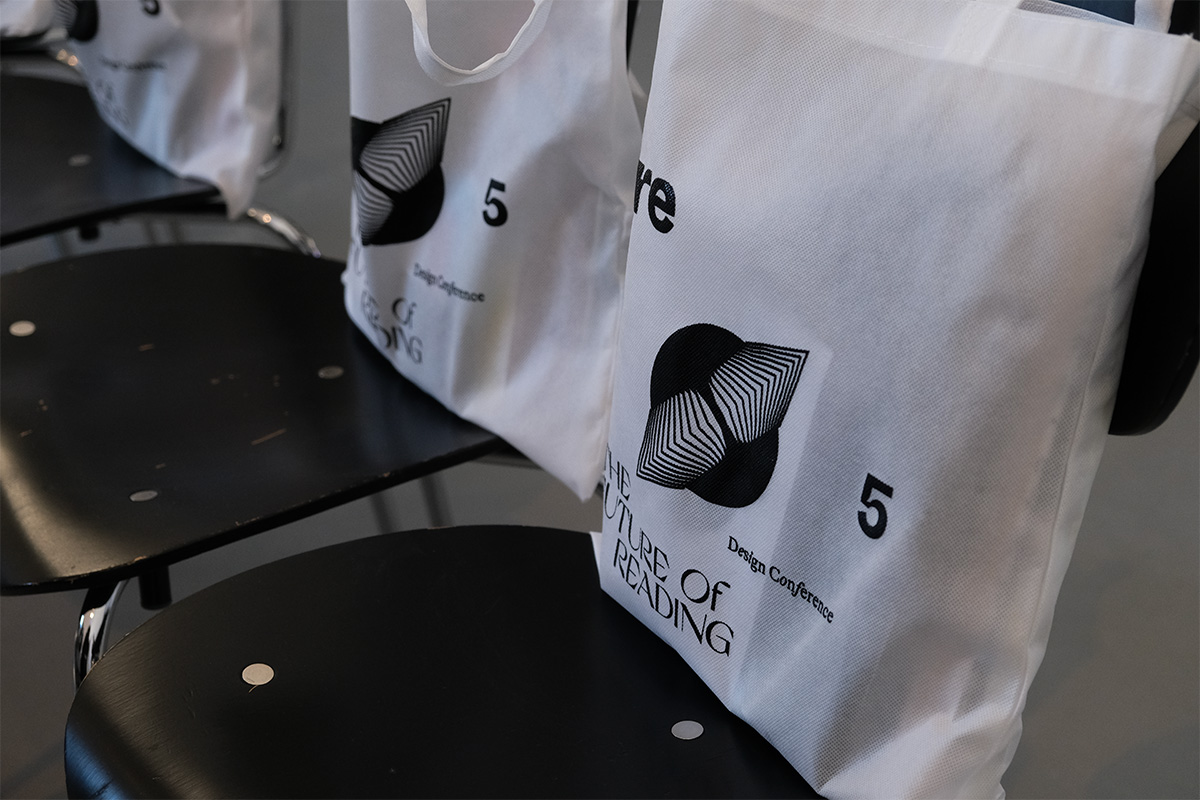FURE Conference 2024
The Design Conference on the Future of Reading—Recap
Last Friday, the FURE conference took place in the foyer of the Münster School of Design. The presentations revolved around the question of what the future of reading looks like and the current significance of reading. There are more texts in the world now than ever before, with humanity writing and reading more than ever. So, reading proficiency shouldn’t be in a bad state, despite constant warnings about a decline in reading skills. On the other hand, what we read not only changes us, but also how we read. We still know too little about how the digital age is changing us and how we can navigate the transition to new technology.
After a welcome from the organizers Prof. Rüdiger Quass von Deyen and Patrick Marc Sommer, and an introduction by the moderators Andrea Hansen and Prof. Dr. Ralf Beuker, Karin Schmidt-Friderichs kicked off with the first presentation. She co-founded the publishing house Verlag Hermann Schmidt in Mainz with her husband and is involved with the Börsenverein and the Stiftung Buchkunst. Her talk focused on the relevance of promoting reading, starting from early childhood. Following that, Jutta Echterhoff explored how Generation Z reads. Alongside her own project, books4future, she introduced new reading platforms that provide interactive functions and personalized experiences. She also gave insights into the role of social media in exchanging and discussing reading material. Prof. Philipp Pape questioned the different reading methods defined by Hans Peter Willberg and Friedrich Forssman in their book Lesetypografie and the relevance of their fixed categories in the age of digital media. He presented a flexible typography considering various reading methods as an alternative. Florian Riedel and Teresa Döge from the amatik Design Agency in Kiel addressed a different topic, presenting their own projects and exploring the role of typography in virtual realities and how reading occurs there.
This was followed by a presentation by TypeMates, explaining how to reconcile branding with ideal readability and the effort behind creating a good typeface. The graduates Stella Schaffrick and Lia Charleen Langer presented their joint bachelor project Initiative Proof, introducing a tool for critical reading among readers from generations Y and Z. Olaf Wittrock, co-founder and partner of the economic editorial team wortwert, explained the concept of “foraging” in his presentation—a kind of search where the audience doesn't search deliberately but stumbles upon information, posing a challenge for journalists. In the last part of the conference, Mike John Otto, Executive Creative Director at Artificial Rome, discussed artistic, narrative (brand) experiences and the central role of words in the design process—in briefings, AI prompts, or customer interactions. He sees the art of reading and writing as fundamental pillars for creativity and as keys to innovation, following the motto: Good input leads to good output.
The final presentation was given by Thomas Poschauko, author of Nea Machina together with his brother Martin Poschauko. In his talk, he gave an inspiring insight about new paths for the design profession—with heart, hand, and AI. He shared his personal journey as a designer, the diversity of his activities, and the importance of human intuition—and highlighted how the significance of the design profession can be elevated through AI. Between the presentations, attendees could enjoy delicious coffee and had the opportunity to learn about products and services at stands from Peyer, Inapa, Druck Verlag Kettler, Verlag Hermann Schmidt, and more. The breaks provided ample space to network and exchange thoughts and reflect on the diverse contributions of the day.
We are looking forward to the next FURE and more inspiring and thought-provoking talks! Thanks for having us.












